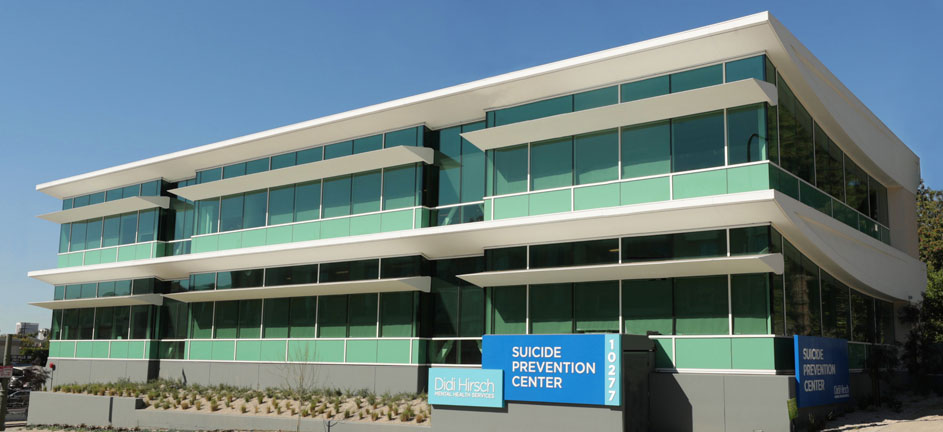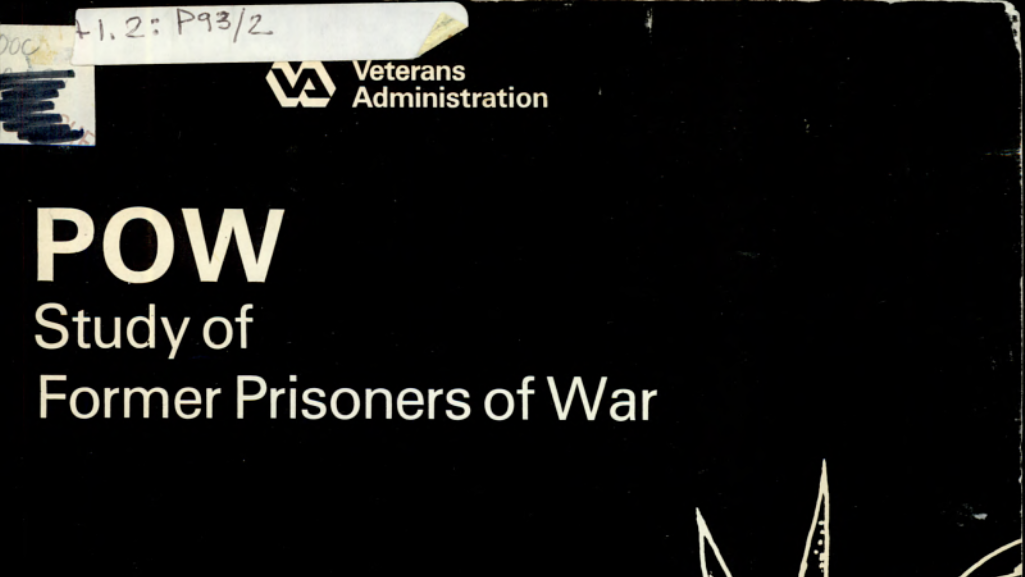
While suicide takes a toll on lives in every segment of society, Veterans in the post 9-11 era have statistically been more at risk than adults in the general population. VA’s efforts to combat the scourge of Veteran suicide owe a significant debt to the foundational research studies conducted by two VA psychologists in the 1950s. The work of Drs. Edwin S. Shneidman and Norman J. Farberow led to some of the earliest crisis intervention programs at VA and elsewhere and the establishment of the nation’s first dedicated Suicide Prevention Center in Los Angeles, California.
The VA and its predecessor organizations made great strides in the treatment of mental ailments stemming from military service during the twentieth century. After World War I, the Veteran’s Bureau established the first specialized neuropsychiatric hospitals to care for Veterans recovering from the trauma of war. In the decade after World War II, the Veterans Administration expanded its capacity to treat Veterans with mental health disorders, operating 40 neuropsychiatric hospitals and providing out-patient services at dozens of clinics. VA also capitalized on its new academic affiliations program to connect its hospitals with the latest advances in medical school training. Despite all of the resources devoted to improving the mental well-being of Veterans, however, the subject of suicide received scant attention within VA or the larger community of mental health professionals. In an unpublished manuscript, Dr. Ferberow described suicide as “a long- neglected, taboo-encrusted social and personal phenomenon.” By the mid-1950s, more than 20,000 people a year were dying by their own hands; yet, the issue was poorly understood and shrouded in guilt and shame.

Farberow and Shneidman, both psychologists working at VA facilities in Los Angeles, embarked on their joint investigation into the psychological aspects of suicide after the latter stumbled on a trove of suicide notes in the city’s coroner office in 1949. They designed a three-part study using the notes, psychological test results, and psychiatric case histories of 128 Veterans who had been treated for mental health reasons at local VA hospitals. The 128 subjects were split evenly among four categories: completed suicides, attempted suicides, threatened suicides, and non-suicides. They published the results of their research in a seminal paper titled “Clues to Suicide” that appeared in a 1956 issue of the journal Public Health Reports. One of the most important findings from their study was that most individuals who had died by suicide had previously attempted or threatened to take their lives. They also found that about half of the suicides occurred within 90 days after an individual had “passed an emotional crisis and . . . seemed to be on the way to recovery.”
The 1956 article was only one of the many publications Farberow and Shneidman authored jointly, individually, or in collaboration with other specialists on the topic of suicide throughout their long and prolific careers. (Both men lived into their nineties and remained active in their field almost to the end). Their research and writings transformed the study of suicide or “suicidology” into a recognized academic discipline. As a result of their work, what was once regarded as a taboo topic became recognized as a vital public health threat. At VA, they served as the co-principal investigators at the agency’s Central Research Unit for the Study of Unpredicted Death for over a decade, analyzing suicidal behavior and risk factors among different types of patients. During the late 1950s, they also developed the theories about suicide prevention that would prove enormous influential within the profession. Starting from the premise that suicide was, in fact, preventable, they argued that the self-destructive impulses leading to suicide could be forestalled by timely detection, intervention, and treatment.
In 1958, Farberow and Shneidman were able to put their theories into practice in a clinical setting, teaming up with psychiatrist Robert E. Litman, to open the first Suicide Prevention Center in the United States. Staffed by psychologists, psychiatrists, and social workers, the center became a model for others. Within 15 years of its founding, over 150 centers had been created throughout the country. The LA center added a 24-hour suicide hotline in 1963 and pioneered the practice of training non-professionals to take crisis calls. Since then, crisis hotlines have saved millions of lives worldwide
In 2007, in response to the rising suicide rates among Veterans, VA partnered with the Department of Health and Human Services to establish a Veterans Crisis Line manned around the clock by VA clinical staff. The same year, VA created suicide prevention coordinator positions at all VA medical centers. More recently, VA made suicide prevention its top clinical priority and released a comprehensive 10-year National Strategy for Preventing Veteran Suicide. The VA plan builds on the concepts of the two VA psychologists who decades earlier set out to understand the dynamics of suicide and how to prevent such tragedies from occurring.
By Katie Rories
Historian, Veterans Health Administration
Share this story
Related Stories
History of VA in 100 Objects
In the 19th century, the federal government left the manufacture and distribution of prosthetic limbs for disabled Veterans to private enterprise. The experience of fighting two world wars in the first half of the 20th century led to a reversal in this policy.
In the interwar era, first the Veterans Bureau and then the Veterans Administration assumed responsibility for providing replacement limbs and medical care to Veterans.
In recent decades, another federal agency, the Defense Advanced Research Project Agency (DARPA), has joined VA as a supporter of cutting-edge research into artificial limb technology. DARPA’s efforts were spurred by the spike in traumatic injuries resulting from the emergence of improvised explosive devices as the insurgent’s weapon of choice in Iraq in 2003-04.
Out of that effort came the LUKE/DEKA prosthetic limb, named after the main character from "Star Wars."
History of VA in 100 Objects
American prisoners of war from World War II, Korea, and Vietnam faced starvation, torture, forced labor, and other abuses at the hands of their captors. For those that returned home, their experiences in captivity often had long-lasting impacts on their physical and mental health. Over the decades, the U.S. government sought to address their specific needs through legislation conferring special benefits on former prisoners of war.
In 1978, five years after the United States withdrew the last of its combat troops from South Vietnam, Congress mandated VA carry out a thorough study of the disability and medical needs of former prisoners of war. In consultation with the Secretary of Defense, VA completed the study in 14 months and published its findings in early 1980. Like previous investigations in the 1950s, the study confirmed that former prisoners of war had higher rates of service-connected disabilities.
History of VA in 100 Objects
In the waning days of World War I, French sailors from three visiting allied warships marched through New York in a Liberty Loan Parade. The timing was unfortunate as the second wave of the influenza pandemic was spreading in the U.S. By January, 25 of French sailors died from the virus.
These men were later buried at the Cypress Hills National Cemetery and later a 12-foot granite cross monument, the French Cross, was dedicated in 1920 on Armistice Day. This event later influenced changes to burial laws that opened up availability of allied service members and U.S. citizens who served in foreign armies in the war against Germany and Austrian empires.







